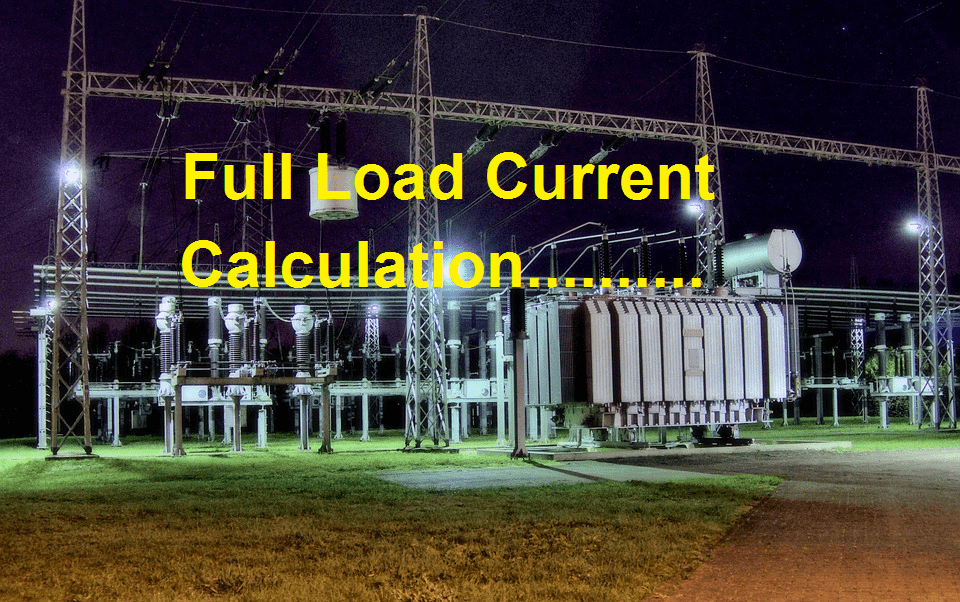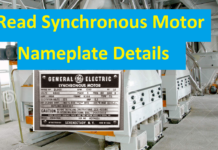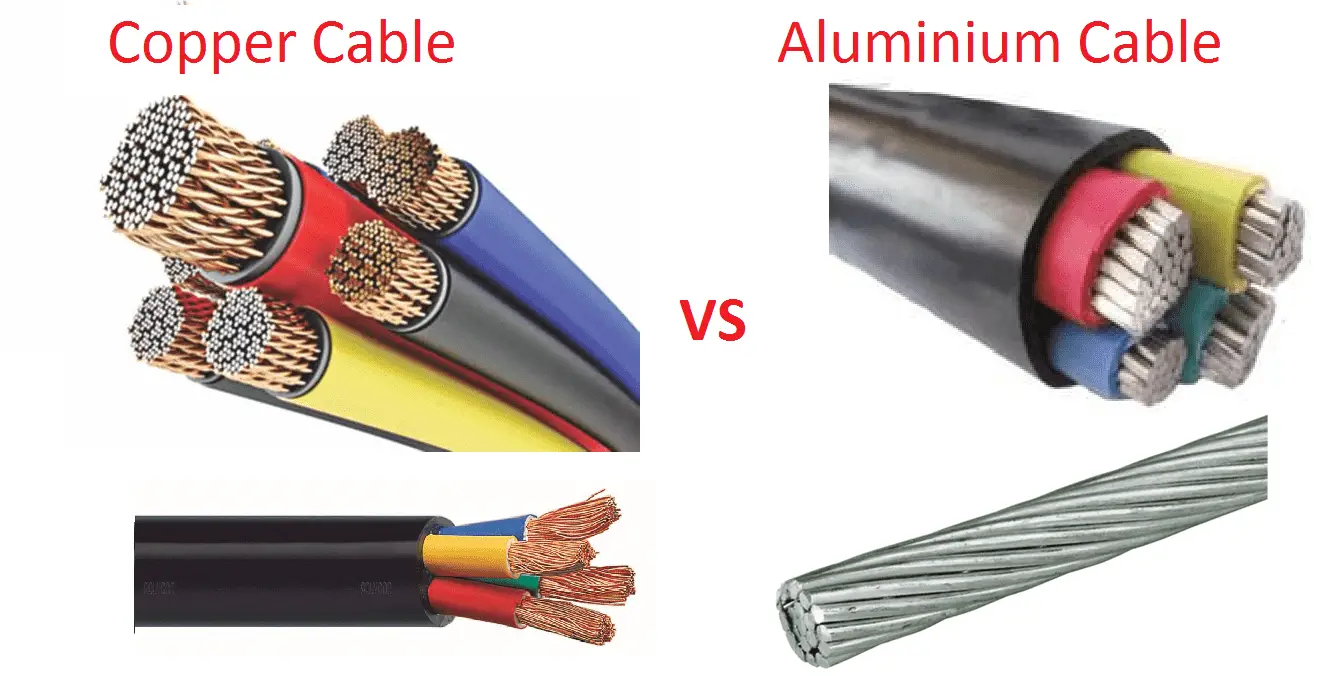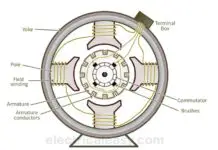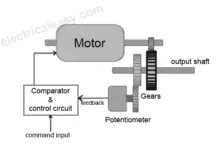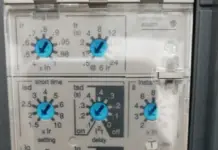Alternator Name Plate Details Explanation:
Alternator means alternating generator. Which converts mechanical energy into electrical energy. Core of the power plant is alternator and turbine. In this, we are going to see, how to read alternator nameplate details easily.
Make: TDPS
It means the original equipment manufacturer is TDPS. These details are used to contact the material manufacturer for technical discussion, spare procurement, maintenance etc.
Output: 31.5MVA
This is output power of the alternator. The maximum full load capacity of the alternator.
[wp_ad_camp_1]
Also see:
- Why alternator mentions in KVA or MVA
- Relationship of Frequency Vs KVA Output or Rating of Transformer
- Why transformer Rating in KVA exact answer
Alternator Name Plate Details Explanation:
Number of Phase:
Three phase => the output phase of the alternator.
Number of pole:
4, Number of magnetic pole used to design the alternator. The number of poles specify the size of the alternator. If the number of poles are increased then, the alternator’s dimensions also has to be increased.
Why alternator size increases as the number of poles increases?
- If the number of pole of the alternator increases, then, the size should be increased because of the synchronous speed of the alternator will get decrease Ns=120f/P. Hence the cooling process of an alternator get decreased. To match, this we need to increase the surface area of the alternator.
- Winding compatibility
- Increase in Rotor size causes, decrease in the air gap between the rotor to stator,
Also see:
- Different Types of Insulation classes in Insulation Winding
- Tan-Delta Test – Finding Insulation Ageing Loss Angle Test
- 7 Types of Voltage Level ELV LV MV HV EHV Ultra High Voltage
Output Voltage:
The rated output voltage of an alternator. Here the output voltage is 11000 Volts.
Output Current:
The rated output current of an alternator. Here the output current is 1443 Amps. This is the safe operational load of alternator. Beyond that limits are not permitted. All the Protection Relays are designed to operate above 1443 ++ Amps.
Output Frequency:
The output frequency of alternator is derived from number of poles and Synchronous speed. The frequency f is equal to Ns*P/120. Typically, synchronous generator manufactured with fixed frequency (50 Hz or 60 Hz). For India 50 Hz alternators are manufactured but for USA 60 Hz alternators are used. See Why
[wp_ad_camp_2]
Also see:
- Frequency conversion
Speed: 1500 rpm
The unit rpm means revolutions per minutes. The rotor or the prime over rotates 1500 rpm per minutes. To be in synchronization, the speed of the alternator should be same. The speed generally controlled by electromechanically build speed governor system. The speed should be monitor continuously. Changes in the speed may lead to trip of the alternator in under voltage, over fluxing or over voltage relay operation.
Limit speed of alternator:
That’s the maximum speed that the alternator’s rotor can without winding collaboration. This is the critical speed of both T-G set (Turbine-Gen set)
Pf: 0.8:
The rated power factor of the machine. But this power factor can be modified by using AVR or transformer tappings.
Type of connection: Star
This is winding connection of the alternator. The winding connection can be either star or delta. But 98% of the alternator is preferred to winding in star connection. As the Star winding generator has many advantage over delta connected generator.
Excitation current:
The output of the RRA to the rotor coil. RRA => Rotating Rectifier assembly.
Excitation voltage:
The input DC voltage to the rotor coil from RRA.
Note: These voltage is controlled by the Automatic voltage Control System (AVR) and the control has done through excitation generator.
Enclosure & Cooling System:
The type of enclosure used to protect the alternator from physical substances. And the type of cooling system used in alternator such as Water cooling, self-air cooling, forced air cooling.
Coolant temperature:
if your alternator is air cooled, then it means the air inlet temperature. If you use water instead of air, it means water inlet temperature of the cooling tubes.
Stater maximum temperature:
The maximum temperature that the stator insulation can withstand. It is purely depending upon the insulation used in the winding coil.
Insulation class: F:
Some international derived insulation standard is there. If F class insulation means the insulation can withstand upto 155 deg temperature for both stator and rotor coil.
[wp_ad_camp_3]
Bearings:
The type of bearings are used…such as ball bearing or roller bearing or thrust bearing or sleeve bearing etc..
Better Read: How to Read & identify Bearing Number
GRS oil:
Which means the type of oil should be used to cool the alternator bearings.
Duty:
S1 means, we can run the machine 24 X 7 throughout the year.

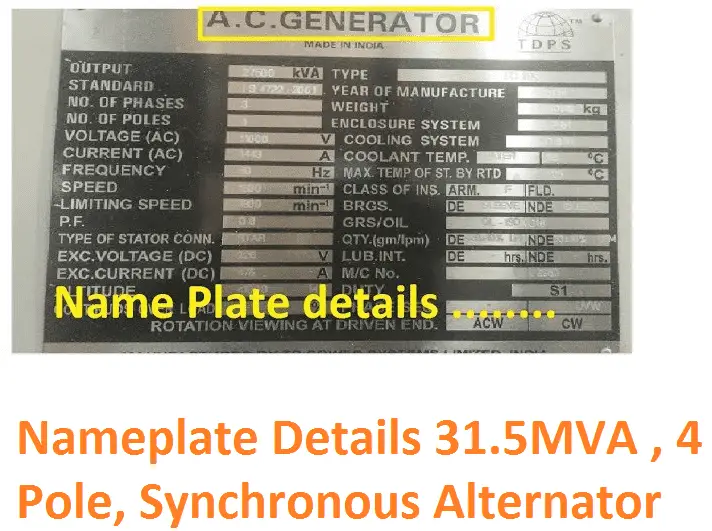
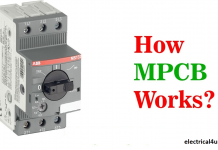
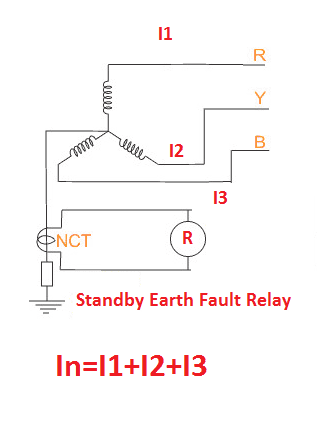
![What is Normally Open & What is Normally Closed [Video Included] What is NO and NC](https://electrical4u.net/wp-content/uploads/2020/09/What-is-NO-and-NC-218x150.png)
